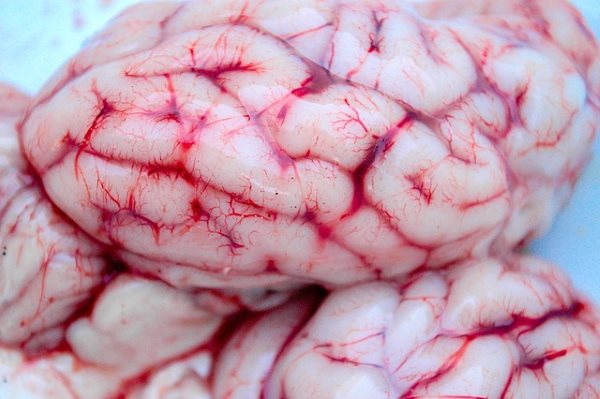In recent years, a rare and deadly infection caused by a brain-eating amoeba has been making headlines, particularly following cases in Kerala, India. This infection, scientifically known as primary amebic meningoencephalitis (PAM), is caused by the amoeba Naegleria fowleri. Though extremely rare, the infection is almost always fatal, making awareness and understanding critical. In this article, we explore all about this rare brain-eating amoeba infection, including its effects, symptoms, diagnosis, treatment, precautions, and frequently asked questions.
What is this Rare Brain-Eating Amoeba Infection in Kerala?
Naegleria fowleri, commonly referred to as the brain-eating amoeba, is a single-celled organism found in warm freshwater environments such as lakes, rivers, hot springs, and poorly maintained swimming pools. It can cause a devastating infection called primary amebic meningoencephalitis (PAM) when it enters the human body through the nose and travels to the brain.
Although infections in humans are extremely rare, when they do occur, they progress rapidly. Naegleria fowleri causes extensive damage to the brain and meningeal tissues, typically leading to coma and death within 10 days of symptom onset. Unfortunately, this infection is almost always fatal. (Source)
How Can One Get Affected by Primary Amebic Meningoencephalitis?
You cannot be infected with Naegleria fowleri by drinking contaminated water. Infection occurs when the amoeba enters the body through the nose, typically during activities such as swimming or diving in warm freshwater, especially in stagnant ponds or lakes in warm climates. Once inside the nose, the amoeba travels to the brain and spinal cord, destroying brain tissue. Additionally, Naegleria fowleri can enter the nose during nasal irrigation or sinus flushing if plain tap water is used instead of sterile, distilled, or previously boiled water. (Source)
What Does the Brain-Eating Amoeba Do and How?
Once Naegleria fowleri enters the nasal passages, it migrates to the brain along the olfactory nerve. The amoeba then begins to destroy brain tissue, leading to severe brain inflammation and swelling. This process is rapid and often results in death within a week to ten days of symptom onset.
Symptoms
The symptoms of PAM typically appear within one to nine days after exposure to the amoeba and can be easily mistaken for those of bacterial meningitis (Source). Early symptoms include:
- Severe headache
- Fever
- Nausea and vomiting
- Stiff neck
As the disease progresses, more severe symptoms develop, such as:
- Confusion
- Loss of balance
- Seizures
- Hallucinations
- Coma
Symptoms typically begin around five days after infection, but the onset can range from one to nine days. Early signs include headache, fever, nausea, and vomiting. As the disease progresses, symptoms may escalate to include a stiff neck, confusion, inattentiveness, loss of balance, seizures, and hallucinations. The infection advances rapidly, often resulting in death within approximately five days, though the range can be between one and twelve days. (Source)
Diagnosis
Diagnosing PAM can be challenging due to its rarity and similarity to other forms of meningitis. Key diagnostic methods include:
- Lumbar Puncture: Cerebrospinal fluid (CSF) analysis to detect the presence of Naegleria fowleri.
- Brain Imaging: CT scans or MRIs to observe brain swelling.
- Laboratory Tests: Polymerase chain reaction (PCR) and immunohistochemistry tests to identify the amoeba in CSF or tissue samples.
Precautions
Preventing PAM involves minimizing exposure to contaminated water sources. Here are some precautions to take:
- Avoid Freshwater Activities: Refrain from swimming or diving in warm freshwater bodies, especially during the summer.
- Use Nose Clips: When participating in freshwater activities, use nose clips to prevent water from entering the nasal passages.
- Avoid Stirring Up Sediment: Try to avoid disturbing the sediment in shallow, warm freshwater areas where the amoeba may be present.
- Ensure Proper Pool Maintenance: Maintain proper chlorine levels in swimming pools and hot tubs to kill the amoeba.
FAQs
What is Naegleria fowleri?
Naegleria fowleri is a single-celled amoeba that causes a rare and often fatal brain infection called primary amebic meningoencephalitis (PAM).
How is the infection contracted?
The infection is contracted when contaminated water enters the nose, allowing the amoeba to travel to the brain.
Can PAM be cured?
PAM is difficult to treat and often fatal, but early diagnosis and aggressive treatment can improve survival chances.
Where is Naegleria fowleri commonly found?
Naegleria fowleri is commonly found in warm freshwater bodies, such as lakes, rivers, hot springs, and poorly maintained swimming pools.
How can I protect myself from Naegleria fowleri?
Avoid swimming in warm freshwater bodies, use nose clips when swimming or diving, and ensure proper maintenance of swimming pools and hot tubs.
Is Naegleria fowleri infection common in Kerala?
While cases in Kerala are extremely rare, there have been a few reported instances. Awareness and precaution are key to preventing infections.
Conclusion
The rare brain-eating amoeba infection caused by Naegleria fowleri is a deadly disease that requires immediate attention and action. Understanding its symptoms, diagnosis, treatment options, and preventive measures can save lives. While cases are rare, particularly in regions like Kerala, staying informed and cautious is essential for safeguarding health against this fatal pathogen.
We have covered the infection here: Also Read: All You Need to Know about Primary Amebic Meningoencephalitis-a Water-Borne Infection





